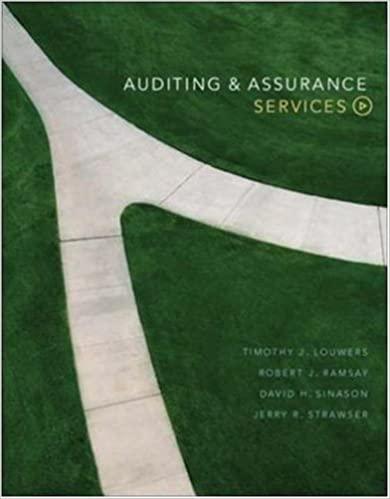Question
(1) . The study of finance and investment depends heavily upon probabilities. With any investment, there is a risk that your entire investment will be
(1) . The study of finance and investment depends heavily upon probabilities. With any investment, there is a risk that your entire investment will be lost. (This holds true for gold, cash, banks, stocks, businesses, etc.) You invest $10,000 in a stock fund for which you have calculated the following scenarios for the next year.
40% chance to gain 20% on the investment 30% chance to gain 5% on the investment 15% chance to lose 5% on the investment 15% chance to lose 50% of the investment. What is the expected value of this investment? (Hint: First determine what the dollar value of each outcome is, and then use the probability to find the expected value of each.)
(2)
As anyone who has seen or heard a drug advertisement will agree, there are often many negative side effects of taking a drug. In order to weigh the cost and benefits, the expected value is often used. Compare the following scenarios. Each scenario should be viewed individually. In other words, the group in part a) is not related to the group in parts b) or c).
a) With no treatment, the risk of a heart attack in a population (of people at high risk of heart attack) is 11% (over a 10 year period). The average hospital cost of a heart attack is $760,000. In a group of 1000 people from this population who receive no treatment, how much would you expect to spend (expected value) on hospital costs over a 10 year period?
b)Aspirin costs about $1 per year and reduces the risk of heart attack to about 8% with no major side effects. What is the expected value of cost of heart attacks and aspirin in a group of 1000 people from this population who all take aspirin every day over a 10 year period
C) A new drug is proposed that reduces the risk of heart attack to 5%. It costs $20 per pill, must be taken twice a day (so 730 pills/year). It also has a 1% occurrence of severe kidney failure with a need for transplant and dialysis (cost of $600,000) and a 2% chance of liver failure (cost of $350,000). What is the expected value of the medication, heart attacks, and side effects in a group of 1000 people from this population taking the new drug over a 10 year period? (Well assume that someone could get a heart attack, have liver failure, and have kidney failure.)
(D) Compare your answers from a), b), and c).
Step by Step Solution
There are 3 Steps involved in it
Step: 1

Get Instant Access to Expert-Tailored Solutions
See step-by-step solutions with expert insights and AI powered tools for academic success
Step: 2

Step: 3

Ace Your Homework with AI
Get the answers you need in no time with our AI-driven, step-by-step assistance
Get Started


